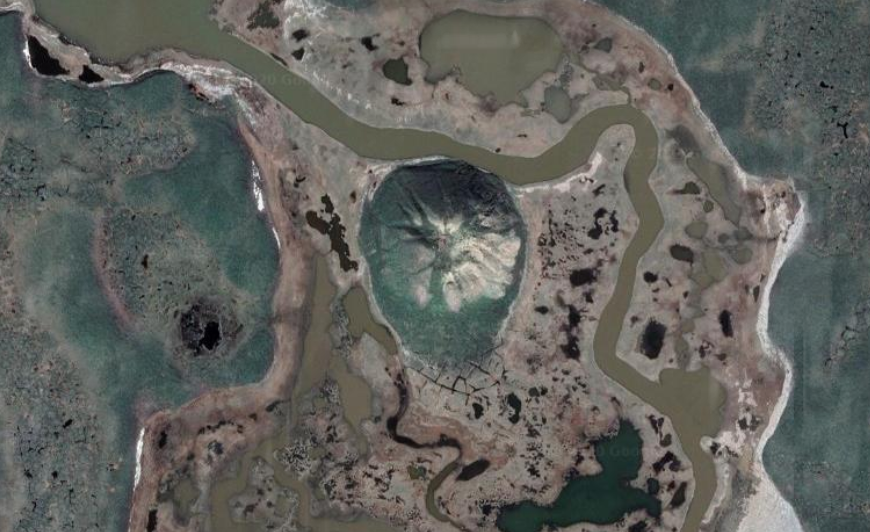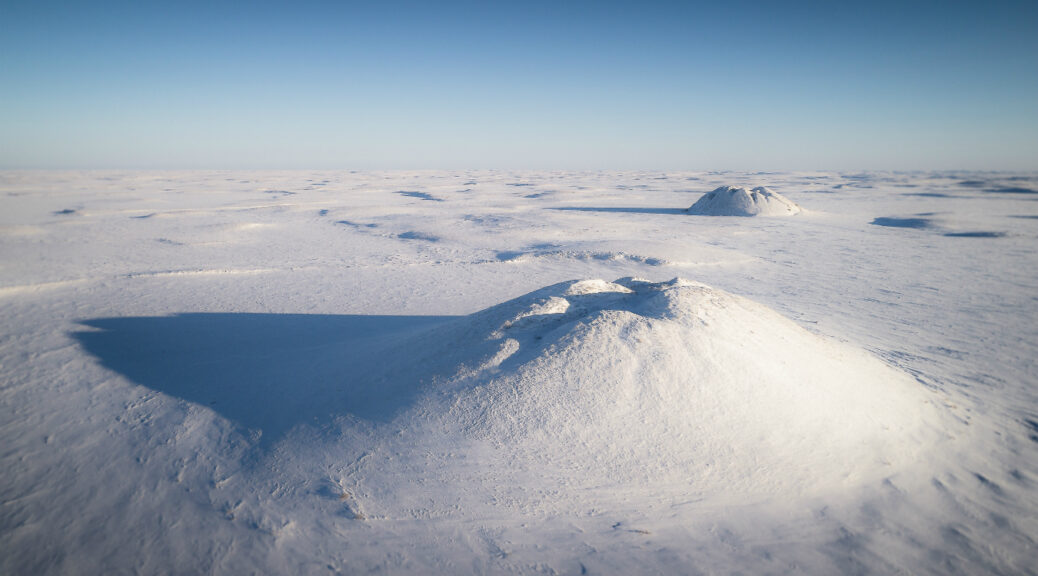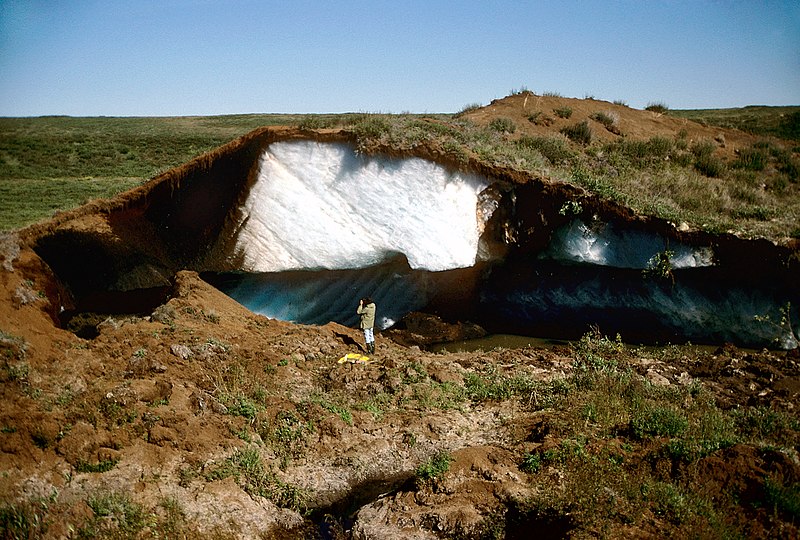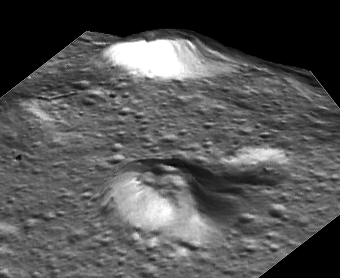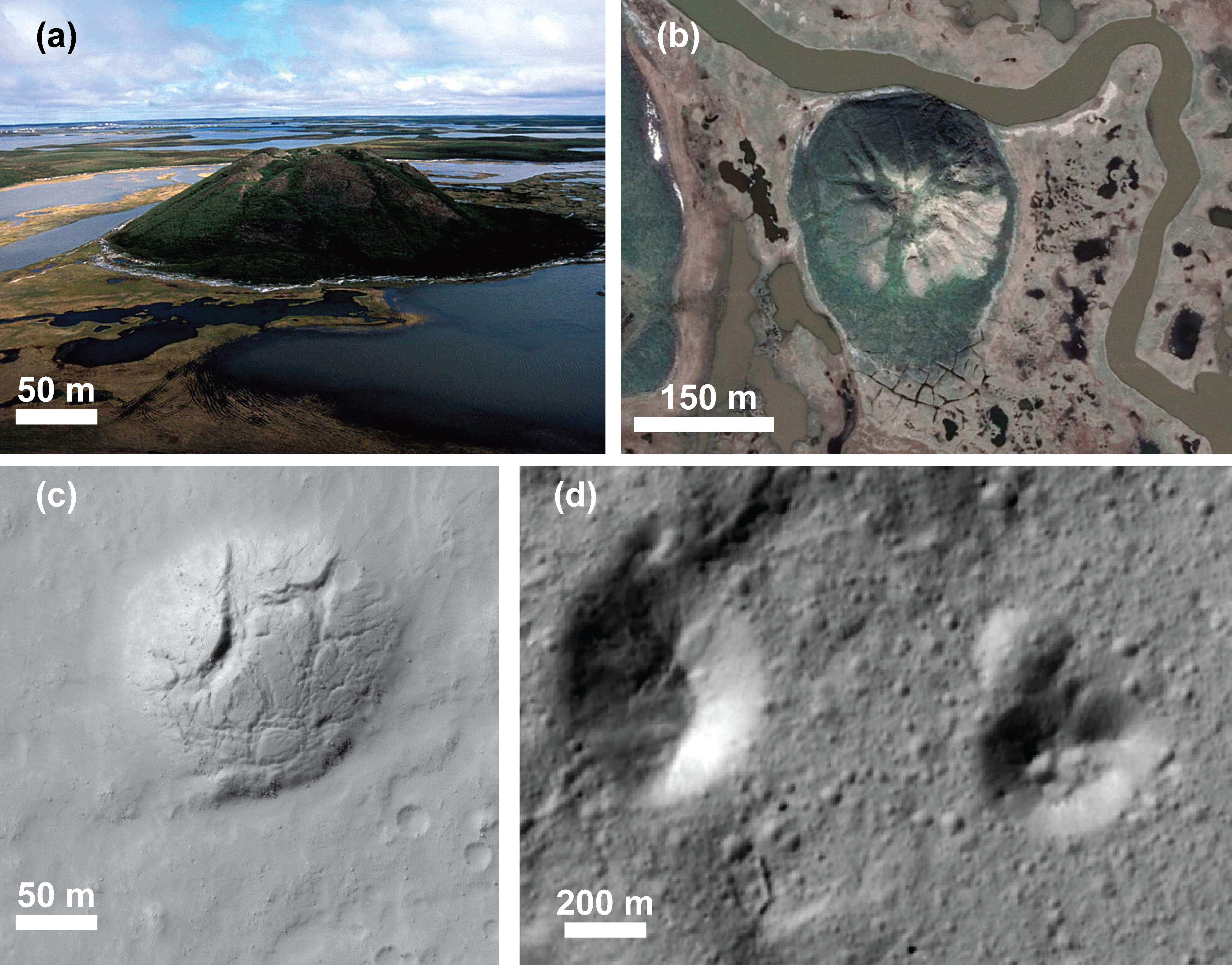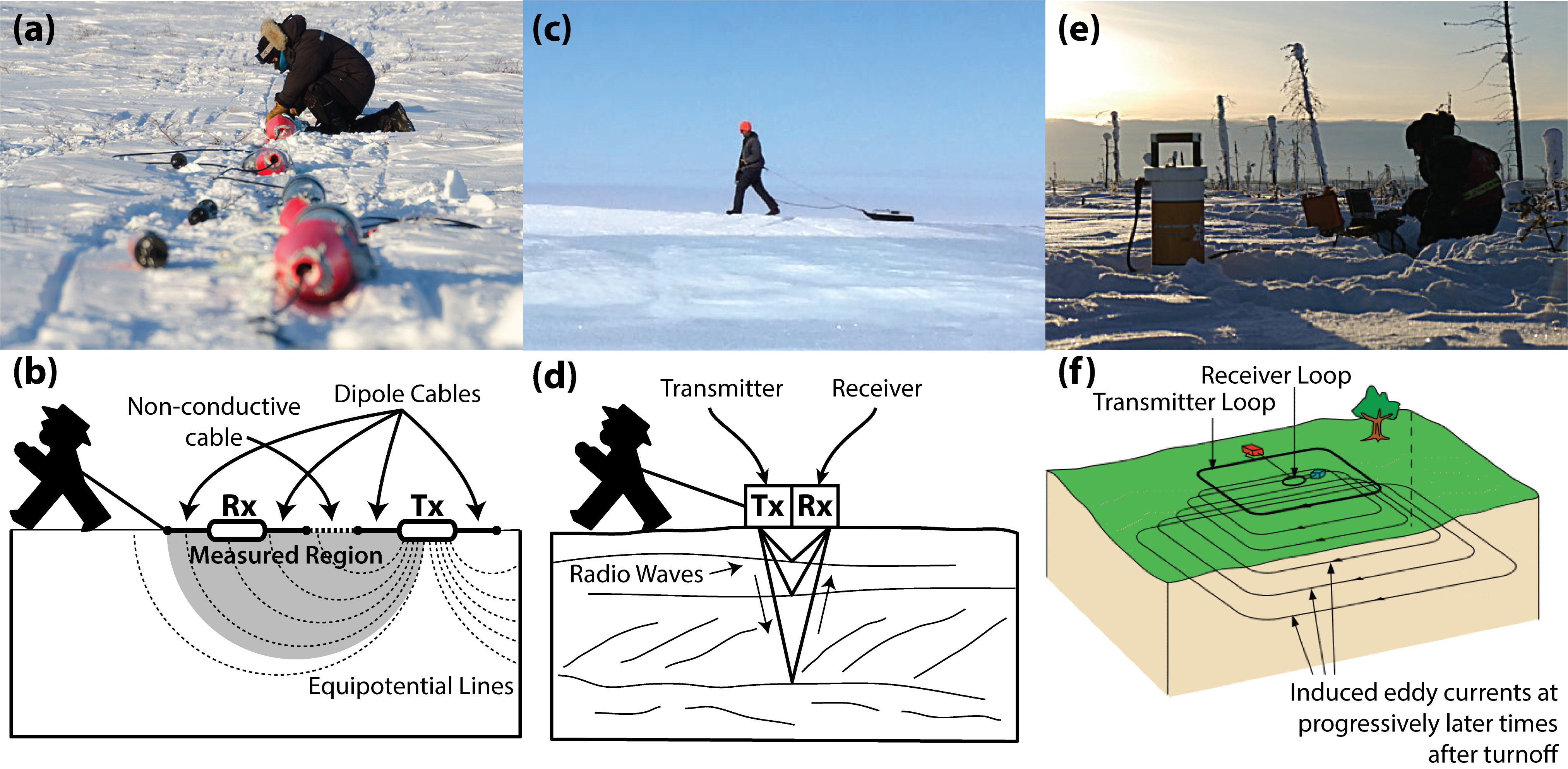Focus on Pingos
Mars, Ceres, and the Earth have abundant reserves of ground ice. On Earth, ice-cored mounds known as pingos are important indicators of extant and extinct near-surface groundwater systems, hydrogeologic properties, and local climate.
Right: A look at Ibyuk Pingo in Canada as seen from directly above (image credit – Google Earth).
